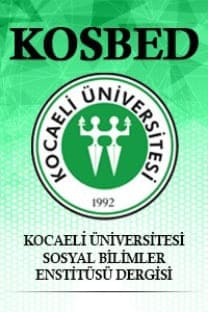Mayer’in Bilimsel ve Matematiksel Mesaj Tasarım İlkelerine Göre Tasarlanmış Öğrenme Ortamının Öğrenci Başarısı Üzerine Etkisi
Bu çalışmanın amacı ilköğretim yedinci sınıf Fen ve Teknoloji dersinde Mayer’in mesaj tasarım ilkelerine göre hazırlanmış bir öğrenme ortamının öğrenci başarısı üzerindeki etkisini incelemektir. Araştırma deseni olarak son test kontrol ve deney gurubu deseni kullanılmıştır. Deney grubuna Fen ve Teknoloji dersi basit makinelerkonusu Mayer’in bilimsel mesaj tasarım ilkelerine uygun olarak anlatılmış ve örnek sorular da matematiksel mesaj tasarım ilkelerine göre çözülmüştür. Kontrol grubuna ise konu geleneksel öğretmen merkezli yöntemle anlatılmış ve bu anlatım sonunda bir sınav uygulanarak öğrencilerin başarıları karşılaştırılmıştır. Araştırma sonucuna göre mesaj tasarım ilkelerinin öğrenci başarısı üzerinde anlamlı bir fark oluşturduğu görülmüştür
Anahtar Kelimeler:
Problem çözme becerisi, problem çözme ilkeleri, matematik öğretimi, fen öğretimi
Scientific and Mathematical Message Design Designed by Mayer’s Principles of Learning Environment Impact of Student Achievement
The purpose of this study is to examine seventh grade Science and Technology course in primary education according to Mayer's message design principles for the impact on student achievement. As research design, a final test was administered to experimental and control groups. The subject of simple machines in the Science and Technology course was taught to the experimental group according to the Mayer's scientific message design principles, and sample questions were solved according to mathematics message design principles. The same subject was taught to the control group with traditional teacher-centered method. As a result of this expression applied test to students for compare students’ success. According to research results, a significant difference was found on the student achievement in terms of applying message design principles.
Keywords:
Problem-solving skills, problem-solving principles, mathematics education, science teaching,
___
- Dede, Y. ve Yaman, S. ( 2006)., “Fen Ve Matematik Eğitiminde Problem Çözme: Kuramsal Bir Çalışma”, Çukurova Üniversitesi Eğitim Fakültesi Dergisi, Cilt: 2, Sayı: 32
- Dow, G. T. and Mayer, R. E. (2004), “Teaching Students to Solve Insight Problems: Evidence for Domain Specificity in Creativity Training”, Creativity Research Journal, Vol. 16, No. 4, 389–402.
- Gagne, R.,M. (1980)., The conditions of learning, NewYork: Holt, Rinehart, & Winston. S 85.
- Jonassen, D.H. (1997), “Instructional Design Models for Well-Structured and Ill- Structured Problem-Solving Learning Outcomes”. ETR&D, Vol 45, No.1.
- Jonassen, D., H., (2000), “Toward a Design Theory of Problem Solving”, ETR&D, Vol. 48, No.4, pp. 63-85
- Lai, L.,Griffin, P., v.d. (2001)., “Modelling Strategies in Problem Solving”, Australian Association for Research in Education Confrence
- Malcolm, L. Fleming, W. Howard, L. (1993), Instructional Message Design, Chapter 6.
- Mayer, R.E. (1982), “The Psychology of Mathematical problem solving”, In F.K. Lester&Garofalo(Eds), Mathematical problem solving. Issues in research(1-13). Philadelpia:Franklin Institute Press.
- Mayer, R., E. (1998), “Cognitive, metacognitive, and motivational aspects of problem solving”, Instructional Science, 26;s 49–63.
- Owen, R., L. Fuchs, L.S. (2002), “Mathematical Problem-Solving Strategy Instruction for Third-Grade Students with Learning Disabilities”, Remedial and Special Education, Vol. 23, No. 5, 268-278
- Quilici, J., L. and Mayer, R., E. (2002), “Teaching Students to Recognize Structural Similarities Between Statistics Word Problems”, Applied Cognitive Psychology, 16: 325–342, www.interscience.wiley.com.
- Stacey, K. and MacGregor, M.(2000), “Learning the Algebraic Method of Solving Problems”, Journal of Mathematical Behavior, 18(2), 149-167
- Sweller, J. (1988), “Cognitive Load During Problem Solving: Effects on Learning”, Cognıtıve Scıence 12, 257-285
- ISSN: 1302-6658
- Başlangıç: 1997
- Yayıncı: Kocaeli Üniversitesi
Sayıdaki Diğer Makaleler
Faiz, Döviz Kuru İlişkisinin Makroekonomik Performansa Etkisi Üzerine Bir Değerlendirme
Sosyal Paylaşım Sitelerinde Üye Bağlılığı Üzerine Bir Araştırma
Belirsizliğin Özel Tüketim Harcamaları Üzerindeki Etkisi: Türkiye Örneği
Burçak Müge Vural, Şevket Alper Koç, Koray Vural
Yoksul Kent Nüfusunun İstihdam Yapısı ve Geçinme Biçimleri: İstanbul Örneği
Bir Mali Gelir Kaynağı Olarak Varissiz Ölenlerin Terekeleri ve Beytülmal Mukataalar
Çevresel Tutum ve Duyarlılığın Ekolojik Ürün Satınalma Davranışına Etkisi
